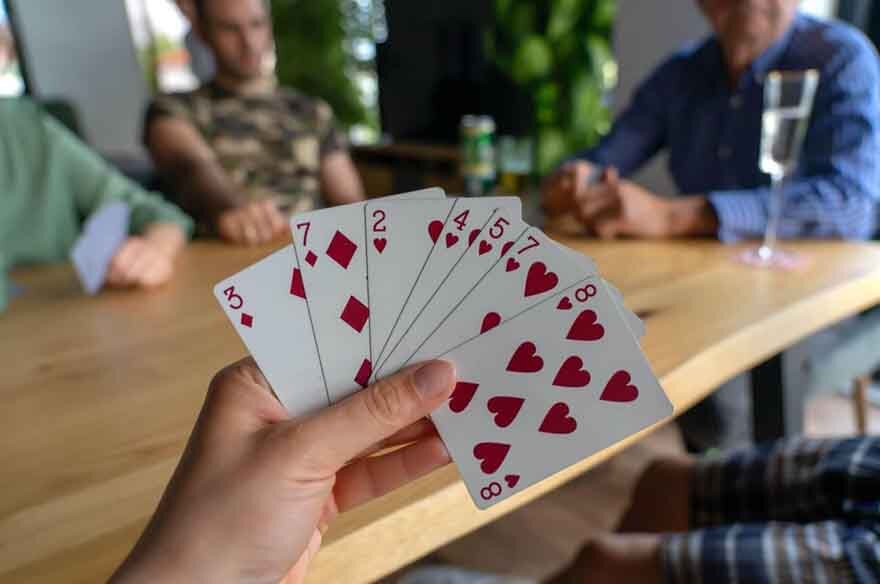Rummy is a classic game we all know and love, and it’s also easy to follow. This game is so easy to learn that it’s perfect for kids 6 years old and up, so if you want to improve your child’s ability to order/sequence numbers, strategize, and motor skills, this is something you may want to introduce to them.
Rummy Rules

For this game, you only need 2 players, though if you want to include more, the set-up will vary.
All you need is a deck of cards and a paper and pencil for scoring.
The goal of the game is to make as many melds as possible so that you can collect the most points.
A meld is a set of 3 or more cards, and there are two types of melds in Rummy.
- Three or more cards of the same number (7 of Hearts/Spades/Diamonds)
- Three or more cards in consecutive number order of the same suit (ex: 7, 8, and 9 of Spades).
All cards have a rank and go in ascending order. Aces are the lowest rank, meanwhile kings are the highest.
Setting Up Basic Rummy

- Each player will take a card from the top of the deck. The person who has the card of lowest rank will be dealing the cards.
- The dealer will pass out 9 cards to each player, all face down. If you’re playing with 2-4 players, it’s 7 cards each. If 5-6 players, it’s 6 cards each
- The leftover cards are placed face down in the center between the players. That will be the draw pile.
How to Play Rummy

- Traditionally, the youngest player goes first. However, if you have 3 or more players, you can start with the person left of the dealer and go counter-clockwise from there.
- When their turn comes, each player will draw a single card from the draw pile or the discard pile (we will get to that in rule 6)
- The player will either lay down a meld or place some cards on an existing meld. The cards must match the type of meld that’s played. For example: if a person has already laid down a melf of a 7 of Diamonds, a 7 of Spades, and a 7 of Hearts, they can add to that meld if they get a 7 of clubs. This works for the other type of meld as well. If you have, for example a 4, 5, and 6, you can add to the meld in another turn by adding to either the beginning (using a 3) or the end (using a 7) of the meld. You can keep adding if you have the cards to do so.
- When the player’s turn is done, they are to put one of their cards in the discard pile, face up. You cannot skip this rule.
- The next player is allowed to draw the top card from the discard pile if they want to instead of the draw pile, but they can’t do both in one turn.
- If the draw pile runs out, the same dealer will shuffle the discard pile well before placing it back with all the cards face down. This will be the new draw pile.
- When a single player has gotten rid of all the cards in their hand, the game ends.
How to Score

Each player will count up the scores of their own cards.
These are the card values:
- Face cards (Kings, Queens, and Jacks) are worth 10 points each.
- Aces are worth 1 point each
- Number cards are worth their face value (ex: a 7 of Spades is worth 7 points)
There are more points depending on the combination of some cards. These are:
- Three aces in one meld are worth 15 points each; a total of 45 points.
- A meld of either a Jack, Queen, and King is worth 15 points total.
- A meld of ace, 2, and 3 cards is worth 15 points total.
Once the players have added up their total, the sum of the card remaining in their hands is deducted from their individual total score. For example, if a person has a 3, 5, and 7 left in their hands, they subtract 15 points.
The player with the most points wins the game, regardless of whether or not they ran out of cards.